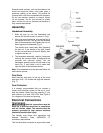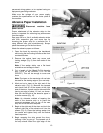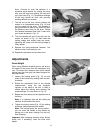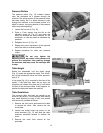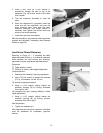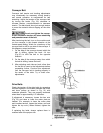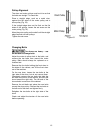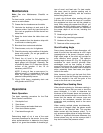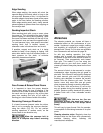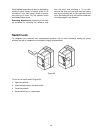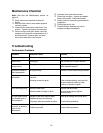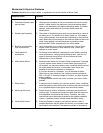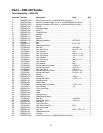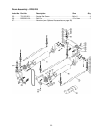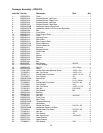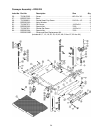
17
Edge Sanding
When edge sanding, the sander will mimic the
opposite edge of the stock which is lying on the
conveyor belt. Because of this, it is important for
the stock edge to have been ripped at the proper
angle to the face before the sanding process.
When edge sanding small stock, clamp several
pieces together to prevent them from slipping on
the conveyor belt.
Sanding Imperfect Stock
When sanding stock with a cup or crown, place
the crown up. This will stabilize the stock to help
prevent tipping or rocking during sanding. (After
the crown has been removed and the top is flat,
turn the stock over and sand the opposite side.)
To avoid personal injury, take special care when
sanding stock that is twisted, bowed, or
otherwise varies in thickness from end to end.
If possible, support such stock as it is being
sanded to keep it from slipping or tipping. Use
extra roller stands, help from another person, or
hand pressure on the stock, to minimize
potentially hazardous situations.
Figure 24
Face Frames & Raised Panel Doors
It is important to have the proper abrasive
contact when doing this type of sanding. If the
machine is set to take an excessive depth of cut,
the result can be a gouge or dip as the drum
goes from sanding the rails at full width to
sanding just a few inches of width of the stiles.
Reversing Conveyor Direction
If a board becomes jammed under the rollers,
back it out by reversing the conveyor direction,
using the switch (Fig. 25). Do not perform
sanding operations in reverse mode, as the
drums rotate in one direction only.
Allow the conveyor belt to
come to a complete stop before reversing
direction.
Figure 25
Abrasives
The abrasive material you choose will have a
substantial effect on the performance of your
sander. Variations in paper type, weight, coating
and durability all contribute to achieving your
desired finish. Ready-To-Cut strips are available
from Powermatic and are listed on page 39.
As with any sanding operation, first begin
sanding with a coarser grit, depending on the
roughness of the stock or the amount of stock to
be removed. Then progressively work toward
finer grits. This means if you are using two
different grits on your dual drum sander, the
coarser grit should always be placed on the front
drum.
The amount of stock to be removed is a major
consideration when choosing the grit grade to
start with. Grits 36 and 60 are primarily designed
for stock removal; grits over 100 are primarily
finishing grits designed to remove the scratch
pattern from the previous grit used. For best
results, never skip more than one grit grade
when progressing through a sanding sequence.
For fine work, such as furniture, try not to skip
any grit grades during the sanding process. In
general, premium quality abrasives will produce
a better finish with a less noticeable scratch
pattern.
Grits that are too fine can
sometimes burnish the wood and leave a
glossy surface which will not accept stains
evenly.
This will vary by type of wood. Oak, for example,
is susceptible to burnishing because of its open
pores.
Cleaning abrasive strips. Regularly clean the
abrasive strips on the drums with commercially
available cleaning sticks, following the
manufacturer’s directions.



